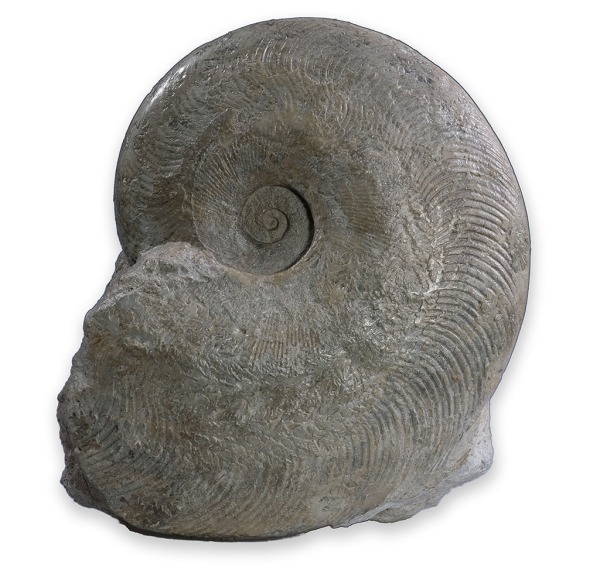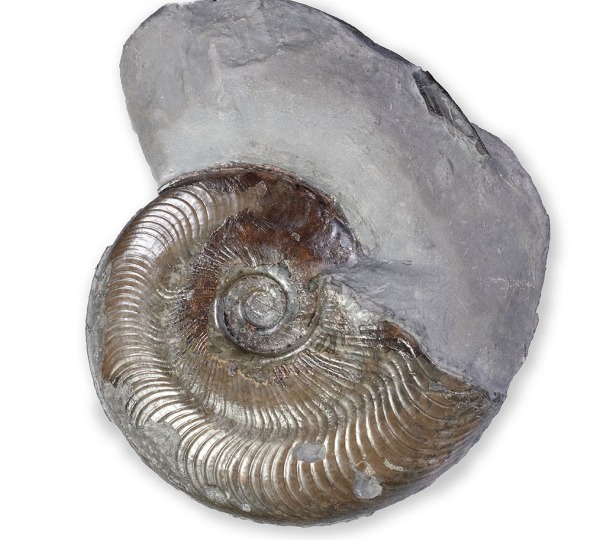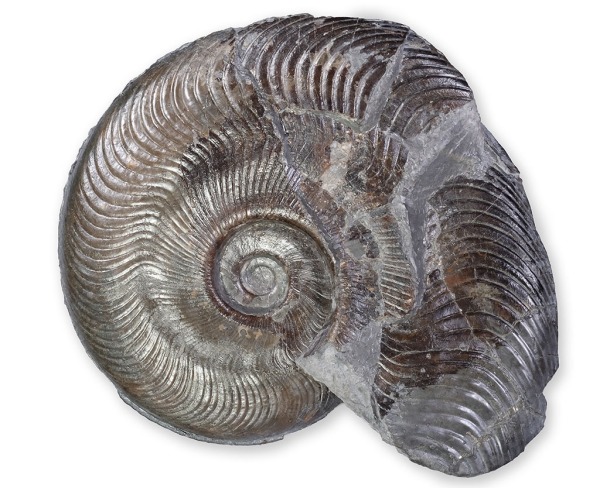One of the ammonites I‘ve conciously hunted and unsuccessfully so for at least 10 years is Harpoceras subplanatum, a species of Harpoceras from the fibulatum subzone. I‘ve even been desperate enough to buy a reference Harpoceras subplanatum from Deux Sevres / France a few years ago on eBay:

As you‘ve seen from the previous post about Harpoceras most members of the genus are actually from exaratum, falciferum and commune zone of the upper Toarcien, so Harpoceras suplanatum is the youngest Yorkshire member of the genus.
Harpoceras subplanatum is relatively similar to Harpoceras falciferum, so with the previous potential fragments I‘ve found, which were ex situ, in areas where there are also exaratum, falciferum and commune subzone sediments around, I just could not be sure …
This all changed about 18 months ago, when I was fossil hunting with John at Ravenscar. There was a small fall that produced the usual fibulatum ammonites like Peronoceras and Catacoeloceras, so age was definitely confirmed. At the end of collecting at this location, we compared finds, and John showed me a discus shaped ammonite in a nodule saying something like „I think it‘s some kind of Haugia, I think I‘m going to give it a whack…“ˋ- and I said something to the effect of
„Noooooo – Please don‘t, it‘s a rare Harpoceras subplanatum !“
This is what it looked like :

Later in the year, John decided to move south and sell off his collection in the process, and the unprepped Harpoceras went to Dave. Dave generously handed this ammonite to me this summer, and of course I was over the moon….
Howarth in his 1992 Harpoceratidae mentions 4 known Yorkshire specimen, so even if there may be more mis- or unidentified or unknown specimen in private collctions, this is definitely one of the rarer ammonites of the Yorkshire lias.
Of course it was one of the first ammonites on the prep list when I returned home after a glorious 3 week holiday in Yorkshire this summer.
Not knowing if the ammonite had inner whorls preserved, I first tackled one side which seemed the most likely to me to be preserved. I usually start ammonites in cement stone matrix by abrading off the soft outer layer to get an impression about preservation and possible cracks running through the fossil.
John or Dave had already secured one obvious crack in the nodule with liquid super glue, but I also found some more potential cracks into which I also let some liquid super glue seep in and let the nodule rest a day before I continued further with the air pen.
Prep work with the pen turned out to be relatively easy and the matrix was not at all sticky to remove. I used magnification during air pen work to make sure I inflicted as little as possible damage to the ammonite shell.
In the end this the result of the first side, showing mainly the phragmocone of the ammonite :

The other side showed some potential to have more of the whorl, possibly a bit of the body chamber preserved, but most likley crushed to some extent.When you prep an ammonite completely free of matrix, which was my goal with this one,you have to take extra care about any potential cracks, so again this side was surveyed under magnification and all potential cracks secured with super glue, especially in the thin inner whorls and the ammonite rested for another day to have the supper glue fully solidify in the cracks.
This side proved to be similarly easy to prep but with a bit of a challenge because the body chamber had been crushed in severall layers towards the inside of the nodule, producing a stair like effect, where the edges of the next stair down needed to be detected very carefully. I decided not to prep the inner whorls more deep than on the other side, fearing to push through the inner whorls which had a crack running right through the middle anyway.
Here‘s the final result for this side :

When comparing Harpoceras falciferum and Harpoceras subplanatum side by side, H. subplanatum does have a less deep furrow in the middle of the whorl, and the angle of the ribs is less acute – H. falciferum has falcate ribbing, H. subplanatum falcoid ribbing. The relative umbilical width of H. subplanatum is smaller than that of H. falciferum.


Huge thanks to John who found this ammonite (and did not whack it) and to Dave who handed it on to me – this really means a lot to me !
AndyS
